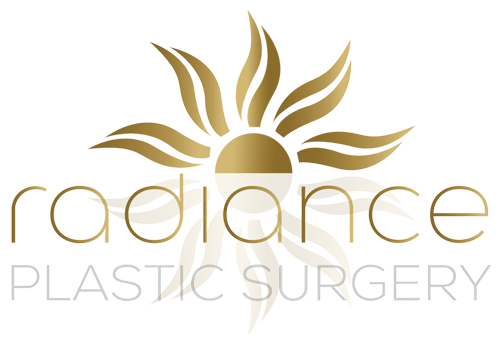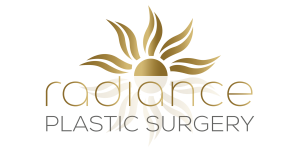Blepharoplasty, or eyelid surgery, is a refined surgical procedure to modify the eyelid’s contours by removing or repositioning excess tissue and reinforcing surrounding muscles and tendons. Ideal candidates for this procedure often seek to address issues such as drooping eyelids or under-eye bags, which can contribute to a tired or aged appearance. While blepharoplasty can be performed for purely cosmetic reasons, in some cases, it may also improve peripheral vision impeded by excessive eyelid skin.
When considering blepharoplasty, understanding the intricate nature of the surgery is imperative. The procedure generally targets the upper or lower eyelids—though it can be performed on both—and is frequently carried out on an outpatient basis using local anesthesia. Meticulous preoperative planning is essential to ensure that aesthetic desires align with the realistic outcomes of the surgery, taking into account factors such as an individual’s anatomical structure and skin quality. Before deciding on blepharoplasty, you should be adequately apprised of the potential risks and complications, such as infection, and understand the steps involved in the recovery process to ensure optimal results.
Key Takeaways
- Blepharoplasty addresses concerns like heavy eyelids and can improve peripheral vision.
- Precise preoperative planning ensures alignment of patient expectations with achievable outcomes.
- Awareness of the surgery’s risks and the recovery process is crucial for a successful procedure.
Understanding Blepharoplasty
Blepharoplasty, commonly known as eyelid surgery, is a procedure aimed at improving the appearance of the eyelids. It involves removing or repositioning excess skin, fat, and sometimes muscle to rejuvenate the upper eyelid, lower eyelid, or both.
Anatomy of the Eyelid
Your eyelids play a crucial role in protecting and maintaining the health of your eyes. The upper eyelid consists of skin, muscle, and fat, each contributing to its normal function and appearance. With aging, these tissues can stretch, leading to sagging skin, which may impair vision or detract from a youthful appearance. The lower eyelid is similarly structured and prone to developing bags due to excess fat and skin.
Types of Blepharoplasty
- Upper Eyelid Blepharoplasty focuses on removing excess skin and fat that can create a hooded appearance and may even interfere with your field of vision. This procedure aims to restore the natural contour of the upper eyelid, resulting in a more alert and youthful look.
- Lower Eyelid Blepharoplasty targets removing excess skin and fat from below the eye. This method effectively reduces the puffiness and under-eye bags often resulting from aging or hereditary factors.
By addressing these issues, blepharoplasty can significantly rejuvenate the area around your eyes, enhancing your appearance and visual function.
The Procedure
Blepharoplasty, or eyelid surgery, is a meticulous operation designed to rejuvenate the periorbital area. This section delineates each phase—preoperative preparations, the surgery itself, and subsequent aftercare—to inform you of what to expect and the importance of each step to ensure optimal results.
Before Surgery
During the preoperative consultation, your plastic surgeon will evaluate your medical history and thoroughly examine your eyelids. Specific instructions will be provided to prepare for surgery, which may include guidelines on eating, drinking, and medication adjustments. It is imperative to discuss any history of eye problems or complications to plan for a safe procedure. Your surgeon will decide whether local or general anesthesia is appropriate for your case.
During Surgery
The surgery involves precise incisions along the natural lines of your eyelids—typically concealed within the folds of the upper lids and just below the lashes in the lower lids. Excess skin and fat may be removed or repositioned. If necessary, blepharoplasty may also involve tightening of the muscles. The surgeon will use fine stitches to close the incisions, which minimizes scarring and aids in a subtle, more natural rejuvenation. The intricacy of the procedure demands a high level of expertise; hence, it is performed by a qualified plastic surgeon.
Postoperative Care
The recovery period post-blepharoplasty is characterized by bruising and swelling, which typically subsides within a few weeks. You will receive detailed care instructions to minimize bleeding and facilitate healing. These may include using cold compresses, keeping your head elevated, and applying prescribed ointments to reduce the risk of infection. Stitches are usually removed within a week after surgery. It is crucial during this time to follow all provided guidance to ensure proper recovery and mitigate potential complications.
Potential Risks and Complications
When considering blepharoplasty, you must be aware of the potential risks and complications despite its high success rate. Your safety and informed consent are paramount.
Immediate Risks
Immediately following blepharoplasty, infection and pain are the primary concerns. It is essential to closely follow post-operative care instructions to mitigate these risks. Adverse reactions to anesthesia, excessive bleeding, and the onset of acute infection can occur but are relatively uncommon when a skilled surgeon performs the surgery. In the rare event of bleeding, it may lead to more pronounced bruising or hematoma formation, necessitating prompt medical attention.
Long-Term Complications
Long-term effects of blepharoplasty may include persistent dry eye, changes in vision, or conspicuous scar formation. While typically temporary, dry eye symptoms can be bothersome and may require medical management. Vision changes are generally short-lived, but lasting visual disturbances should be evaluated immediately. Additionally, while the aim is to minimize scarring, individual healing processes can affect scar appearance. If you are experiencing long-term discomfort or have concerns regarding the surgery’s aesthetic outcome, it is advisable to consult your surgeon to discuss potential revision procedures or further treatments.
Recovery and Results
Post-blepharoplasty recovery is a critical phase where you will see the gradual emergence of the surgical procedure’s outcomes. Proper care during healing is paramount to achieve the desired aesthetic results.
Healing Process
Following blepharoplasty, your recovery time can vary; however, you should expect the healing process to involve bruising and swelling around the eyes. The initial recovery usually spans one to two weeks, during which the bruising will subside significantly. Incision sites may appear red or pink and will gradually fade over time.
Keeping your head elevated, applying cold compresses, and following your surgeon’s specific aftercare instructions are essential to facilitate recovery. If you have concerns about the healing of your incisions or the appearance of scars, consult your surgeon. Detailed postoperative care is crucial for mitigating the risk of complications ranging from cutaneous changes to vision-related issues, as outlined in a study on Blepharoplasty complications.
Expected Outcomes
The expected outcomes of your blepharoplasty should align closely with your expectations, which should be set realistically in consultation with your surgeon. The ultimate goal is to refresh and improve the appearance of your eyelids, resulting in a more “rested” and aesthetically pleasing look. It’s important to note that the full results may take several months to manifest as your body completely heals.
Patients often report an improvement in the appearance of their eyes, with reduced bagginess and fewer drooping skins. Such aesthetic enhancements can also contribute to an improved quality of life, as supported by findings in a prospective study. Overall satisfaction is typically high, assuming expectations have been appropriately managed and the recovery process has been uncomplicated.

